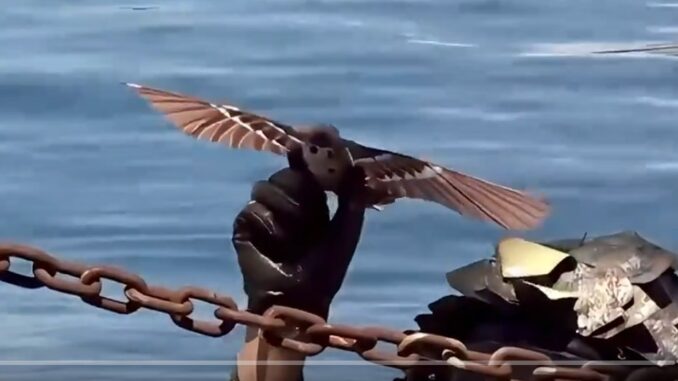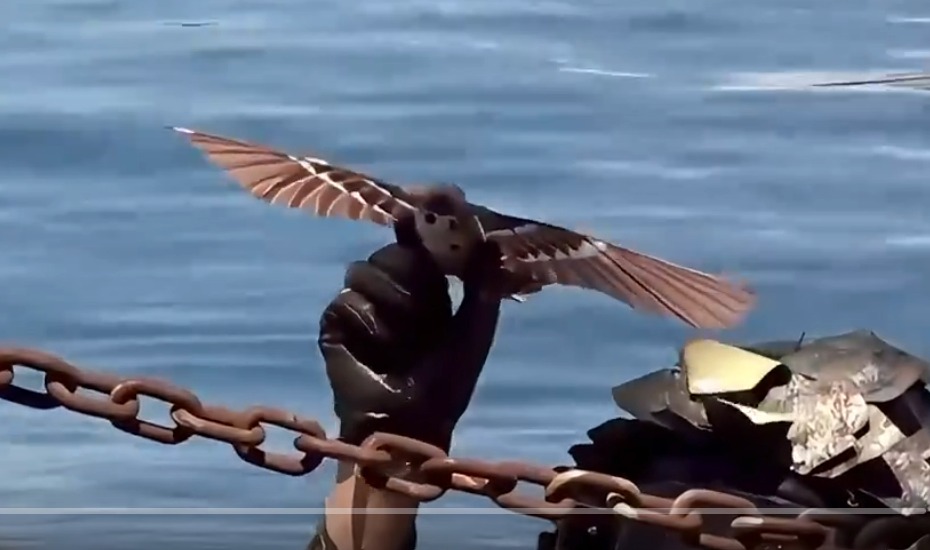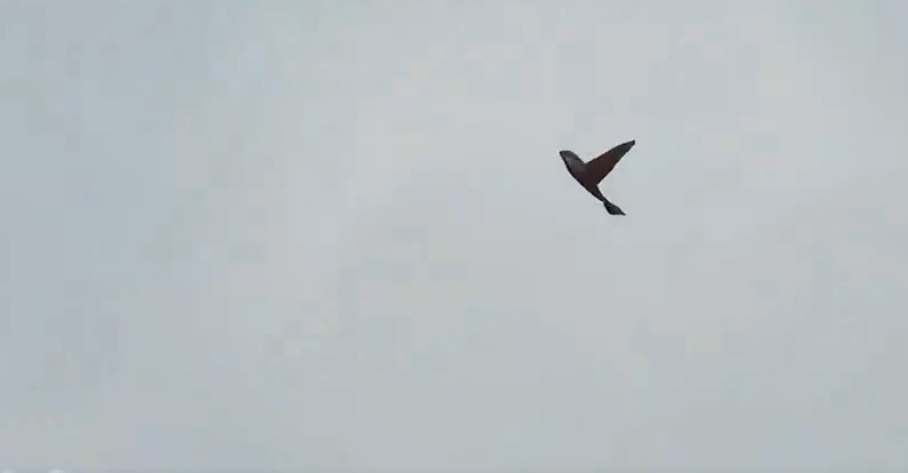
Technical analysis of the biomimetic drones used by China’s Jiaolong commandos, their military potential and strategic implications.
The Jiaolong commandos, a maritime special operations unit of the Chinese army, use biomimetic drones designed to mimic birds. These drones, which can be used for surveillance or kamikaze attacks, offer a significant tactical advantage thanks to their stealth and ability to avoid detection. The use of such drones, which incorporate miniaturised sensors and cameras, demonstrates the rapid development of military technologies in China. This article explores the technical aspects of these drones, their potential impact on military operations, and the strategic implications for defence.

The use of biomimetic drones by Jiaolong commandos: a military innovation
Recent videos showing the Jiaolong commandos using biomimetic drones highlight a significant advance in Chinese military technology. These drones, which mimic the appearance and flight of birds, offer surveillance and attack capabilities with an unprecedented level of stealth. Biomimetic drones are not new in themselves, but their use by special forces such as the Jiaolong demonstrates their technological maturity and practical application in combat scenarios.
These drones, which vary in size, can be as small as a sparrow or as large as a hawk. They are designed to incorporate miniaturised sensors and cameras capable of transmitting video in real time. This capability is particularly useful for discreet reconnaissance missions or for monitoring enemy forces without attracting attention. In addition, the possibility of equipping these UAVs with small explosive charges for targeted attacks broadens their spectrum of use, making them capable of neutralising specific targets while reducing the risk of detection.
Technical characteristics and performance of biomimetic drones
The drones used by the Jiaolong commandos feature advanced technical characteristics. They are designed to mimic the movements and appearance of birds, making them difficult to distinguish from real birds with the naked eye. This biomimicry is achieved thanks to flapping wings, a mechanism inspired by ornithopters, which enables them to move realistically through the air.
These drones are also equipped with sophisticated sensors, including cameras capable of capturing high-resolution images and videos, even in low-light conditions. The data collected can be transmitted in real time to a ground control station, enabling operators to monitor strategic areas or adjust missions on the basis of the information received.
Another remarkable technical aspect is the autonomy of these drones. In 2022, a team from Northwest China Polytechnic University set a Guinness World Record for the longest flight time for an ornithopter, with a range of 2 hours, 34 minutes and 38 seconds. This was later surpassed with a flight of 3 hours, 5 minutes and 30 seconds. These performances illustrate the ability of biomimetic drones to carry out extended missions without the need for frequent recharging, which is crucial for military operations where stealth and endurance are essential.
Strategic implications of biomimetic drones for modern warfare
The introduction of biomimetic drones into the arsenal of the Jiaolong commandos has significant strategic implications. Firstly, these drones increase China’s ability to carry out surveillance operations discreetly. Their characteristics make them difficult to detect and identify as threats, which is a major advantage in operations where surprise and surprise effect are crucial.
Secondly, these drones can potentially be used in offensive roles. The integration of miniaturised explosive charges enables these drones to be used as kamikaze weapons, capable of striking specific targets with precision. In a context of asymmetric warfare or counter-insurgency operations, this capability can provide an effective means of neutralising adversaries while minimising the risks to the operating forces.
The use of these drones by the Jiaolong commandos could also influence Chinese military doctrine on unconventional warfare. The ability to deploy these drones in urban or forest environments, where they can blend in with their surroundings, offers new tactical options for special operations. What’s more, the ability of these drones to operate for long periods means that they can be continuously monitored and react more quickly if needed.
Consequences for international defence and security
China’s use of biomimetic drones raises important questions in terms of international defence and security. On the one hand, these drones represent a new threat to traditional military forces, which must now adapt to detect and counter airborne threats that mimic natural elements. Air defence systems will have to be improved to distinguish these drones from real birds, which may require the development of new detection and classification technologies.
On the other hand, China’s adoption of these technologies could encourage other countries to develop similar systems, which could lead to an arms race in the field of biomimetic drones. Countries seeking to maintain technological superiority in military operations could be tempted to develop their own versions of these drones so as not to be left behind.
Finally, the use of biomimetic drones could have implications for international humanitarian law. The use of hard-to-detect drones for targeted strikes raises questions about the rules of engagement and the protection of civilians. It is crucial that international standards evolve to govern the use of these new technologies and minimise the risks to civilian populations.
Future prospects for biomimetic drones
Biomimetic drones, such as those used by the Jiaolong commandos, probably represent only the beginning of a new era in drone technology. In the future, it is possible that these drones will become even more sophisticated, with increased autonomy, more advanced communication systems, and greater integration with other weapons systems.
The growing interest in biomimetic systems is not limited to aviation. Research is also underway to develop land and underwater robots that mimic animals, such as snakes or fish, for reconnaissance or sabotage missions. These systems could play a key role in future wars, enabling military forces to carry out operations more discreetly and effectively.
However, the development and use of these technologies must be accompanied by ethical and regulatory considerations. It is essential to ensure that these innovations are used responsibly and in accordance with the principles of international law. Discussions on the moral implications of the use of biomimetic drones should be at the centre of debates on modern warfare, in order to prevent abuses and protect the rights of individuals.

The impact of biomimetic drones on military operations
The biomimetic drones used by the Jiaolong commandos illustrate a major technological advance that could transform military operations. Their ability to mimic birds while carrying out reconnaissance or attack missions offers a significant tactical advantage. However, this technology also raises challenges in terms of detection, defence and ethics.
The potential impact of these drones on military operations and defence strategies is considerable. As these technologies evolve, it will be crucial for military forces and policy makers to adapt to the new realities of modern warfare. Ultimately, the use of biomimetic drones could redefine the way in which conflicts are fought, prioritising stealth, precision and efficiency in military operations.
War Wings Daily is an independant magazine.